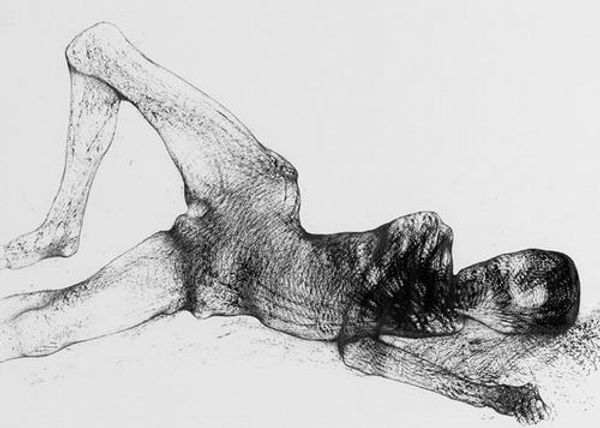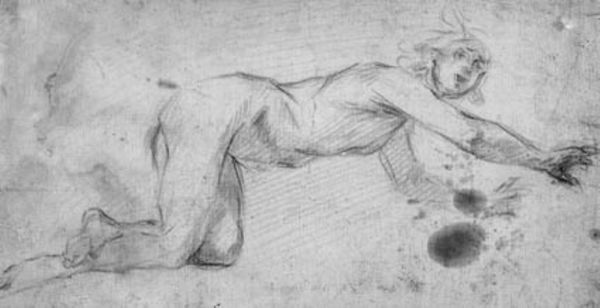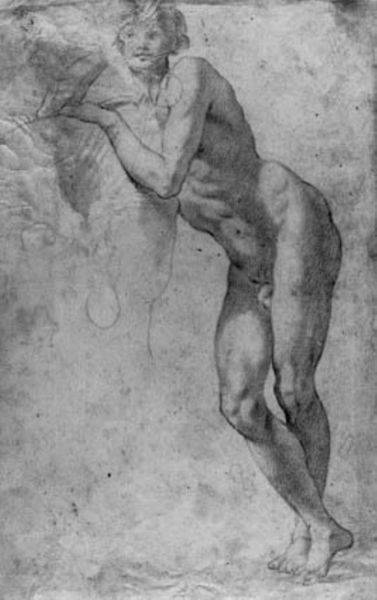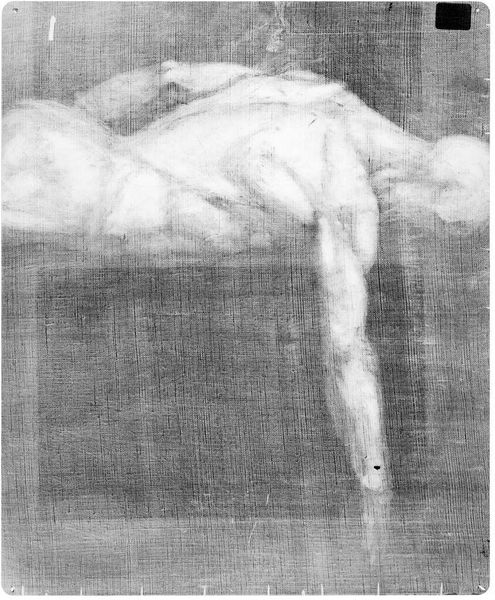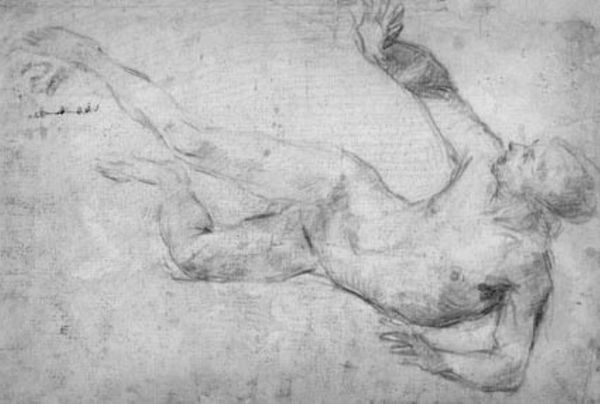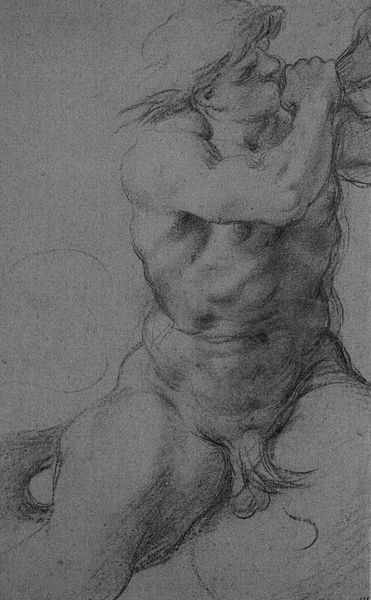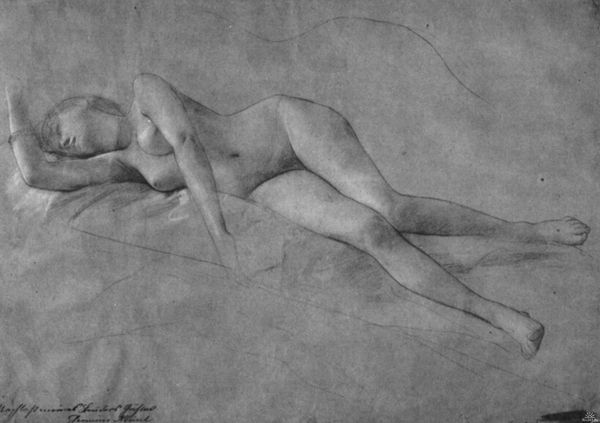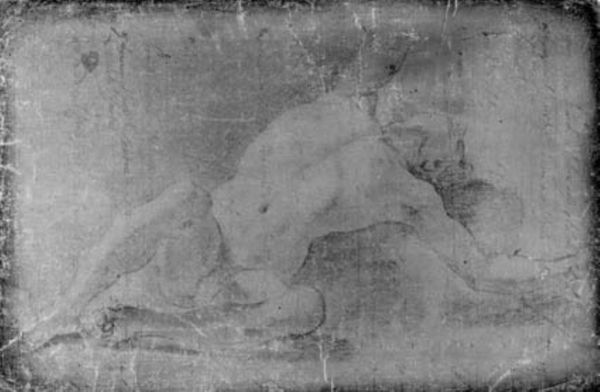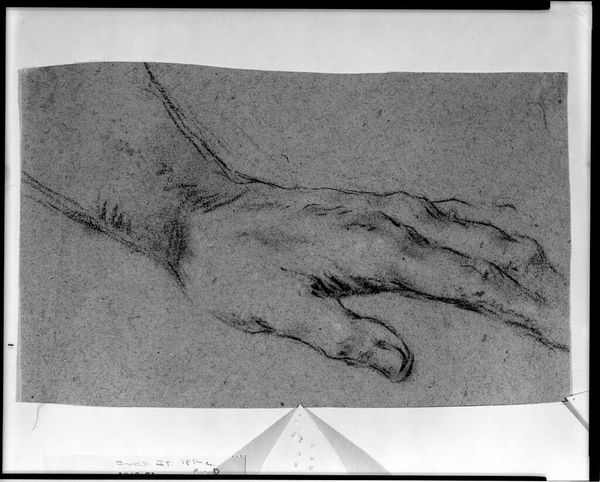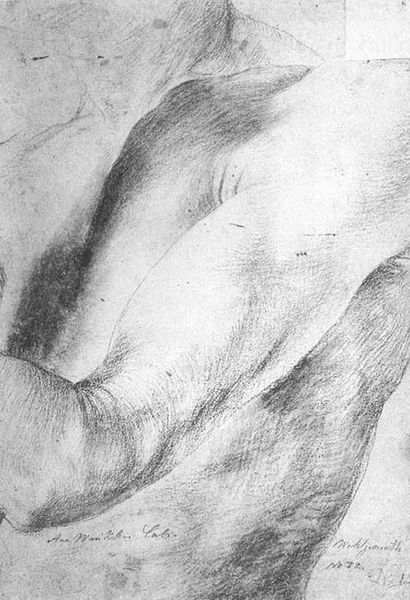
drawing, graphite, charcoal
#
drawing
#
charcoal drawing
#
figuration
#
11_renaissance
#
pencil drawing
#
graphite
#
charcoal
#
academic-art
#
charcoal
#
nude
#
graphite
Dimensions: 366 mm (height) x 59 mm (width) (bladmaal)
Curator: My first thought: drama. Just drama. It's a very particular drama, though. Editor: It’s a charcoal and graphite drawing, likely from around 1628 to 1630, attributed to Willem Panneels and titled "Hercules beruset. Hercules' højre ben"—roughly translated, "Hercules Intoxicated, Hercules' Right Leg." Part of a larger study, perhaps? Curator: "Intoxicated"...that explains a lot. I mean, look at the line, how it wavers and trembles—it mirrors the wobble of too much wine, I think! There's something almost fragile in the rendering of such immense power. Isn’t it wild to see this hyper-masculine form presented so…off-kilter? Editor: Absolutely. And beyond the slightly humorous portrayal of a stumbling Hercules, remember the context. Panneels was a student of Rubens. These kinds of drawings were often academic exercises, demonstrating mastery of anatomy and form but also subtly engaging with contemporary philosophical and political discourses. Presenting a flawed hero is itself a statement. What does this 'drunkenness' represent, culturally speaking, in the 17th century? Is it a critique of unchecked power? A humanizing touch? Curator: Humanizing is a generous way to put it! To me, it suggests something closer to... vulnerable. The god-like facade cracks, revealing fallibility. Plus, this leg looks…lived in. Muscular, sure, but worn. Panneels isn't giving us the gleaming, flawless hero; he's presenting the aftermath. Maybe that's what makes it relatable, oddly enough. Editor: Perhaps. Or it's an intentional destabilization of the very notion of the 'heroic.' Consider the emerging skepticism of the Baroque period, challenging the certainties of the Renaissance. Panneels’ drawing might be seen as an embodiment of that shifting perspective—a critical, perhaps even subversive, take on classical ideals. He shows us how Hercules crumbles a bit, right before our eyes. Curator: Humbles him. Definitely humbles him. Well, whether subversive or not, there's an honesty in its imperfection that grabs me more than any pristine marble god ever could. It’s kind of deliciously... flawed. Editor: Agreed. It definitely encourages a rethinking of power, prowess and cultural perception, inviting us to scrutinize these seemingly monolithic figures in classical history through the lens of vulnerability.
Comments
No comments
Be the first to comment and join the conversation on the ultimate creative platform.
